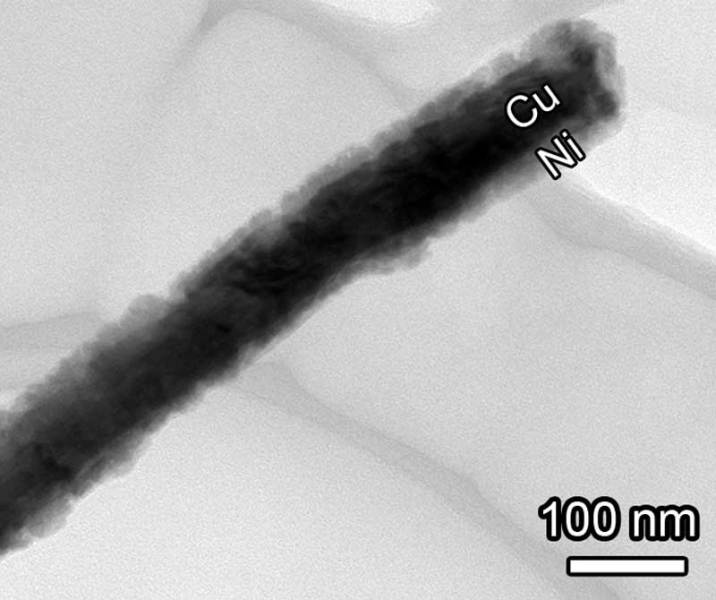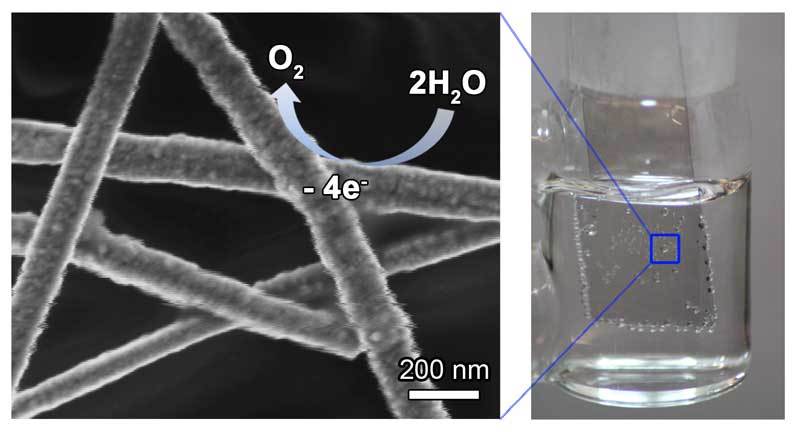Improving hydrogen production with copper nanowires
 A group of researchers at the Duke University have managed to devise a novel water splitting system that can produce storable hydrogen fuel. The system uses copper nanowires, fused in a see-through film, which can split water molecules using the power of sunlight. These nanowires offer an efficient and low cost method for solar energy harvesting.
A group of researchers at the Duke University have managed to devise a novel water splitting system that can produce storable hydrogen fuel. The system uses copper nanowires, fused in a see-through film, which can split water molecules using the power of sunlight. These nanowires offer an efficient and low cost method for solar energy harvesting.
Water splitting is one of the ways researchers have tried to capture the solar energy and to convert it into storable fuels. The reaction of water splitting occurs naturally in plants through photosynthesis. For half a century, many research groups have tried to mimic this process using various chemical catalysts.
Currently, indium tin oxide (ITO) is the most commonly used material for the hydrogen production by water splitting. While it is transparent in thin layers, ITO in bulk form is yellowish to grey color. Transparency allows sunlight to pass through and trigger the water splitting reaction. Aside being transparent, ITO has the ability to conduct electricity. However, this material is far from ideal for large scale applications.
“Indium is not very abundant. It is similar in abundance to silver in the earth’s crust. As a result, solar fuel cells using ITO will likely remain expensive and uncompetitive with conventional energy sources like coal and natural gas”, said Ben Wiley, assistant professor of chemistry at Duke University.
On the other hand, copper is 1,000 times more plentiful and 100 times less expensive than indium. Copper nanowire catalysts can be produced on pieces of glass or plastic in a liquid ink form, using a machine that functions like a printing press. As for the ITO catalyst production, it requires large, sequential chambers of pumps and vacuums that deposit thin layers of indium atoms at a far slower rate. Hence, copper nanowire catalysts production cost are also lower compared to ITO catalysts production.
The copper nanowire films are flexible and consist of networks of microscopic metal rods, whose properties and applications have been studied for years by researchers at Wiley’s lab. They have tried to coat the nanowires in either cobalt or nickel – metals that serve as the actual chemical catalyst. Even coated with one of these metals, the nanowire films are nearly seven times more effective in passing sunlight compared to ITO.
Water splitting reaction is divided into two reactions: water oxidation and reduction. The nanowire films are involved only in water oxidation. The other half of the water splitting reaction involves using the electrons obtained from water oxidation to reduce water to hydrogen.
“A lot of groups are working on putting together complete devices to generate fuels from sunlight, but the efficiencies and costs of these systems have to be improved for them to get to commercial production”, said Wiley.
Apart from hydrogen production, Duke researchers claim that copper nanowires will have other applications. For instance, they show promise for use in flexible touch screens, organic LED (or OLED), lights and smart glass.
For more information, read the article published in journal Angewandte Chemie: “Optically Transparent Water Oxidation Catalysts Based on Copper Nanowires“.










Hydrogen is the future energy carrier and all means to generate it should be encouraged.
Dr.A.Jagadeesh Nellore(AP),India